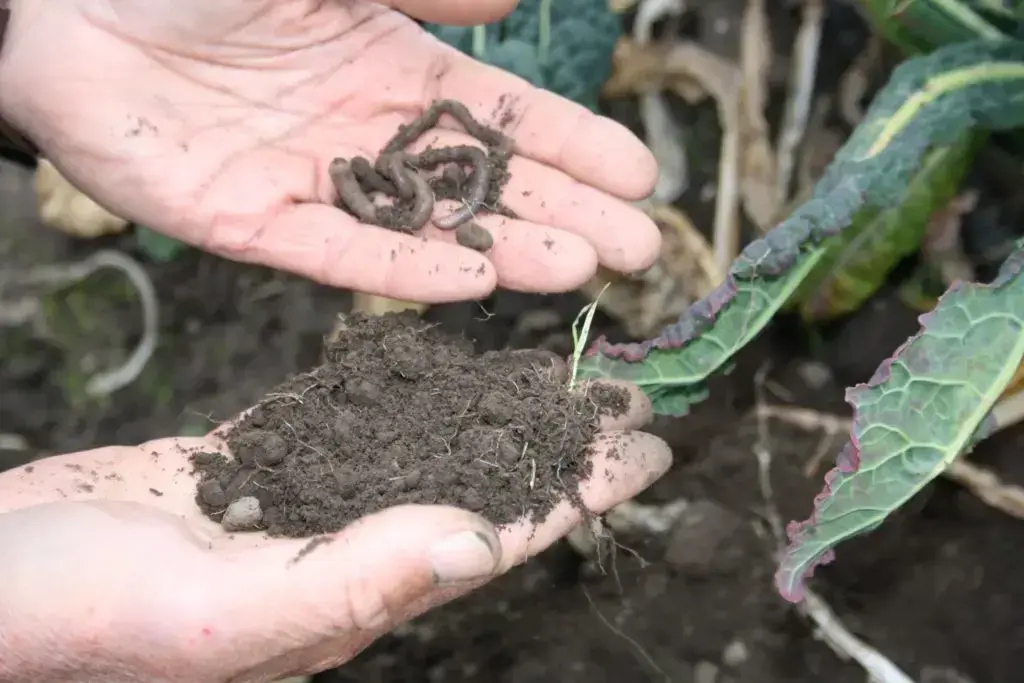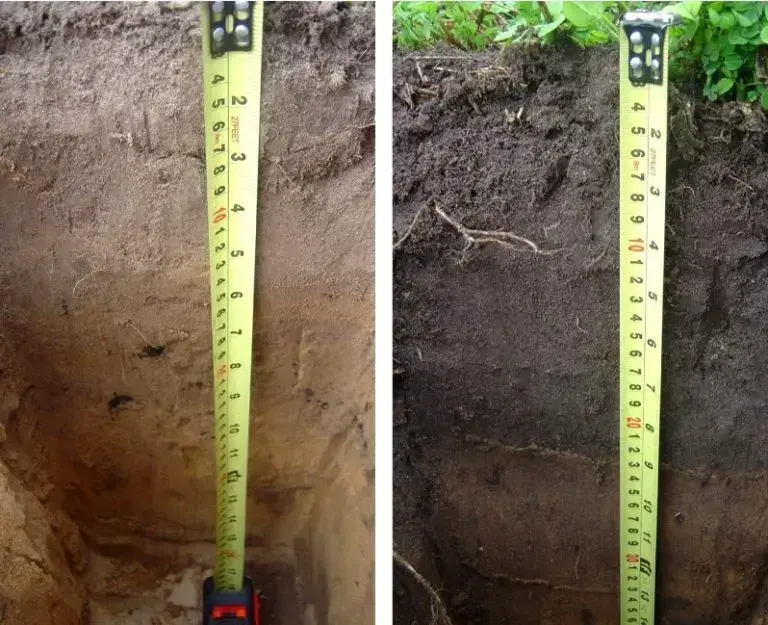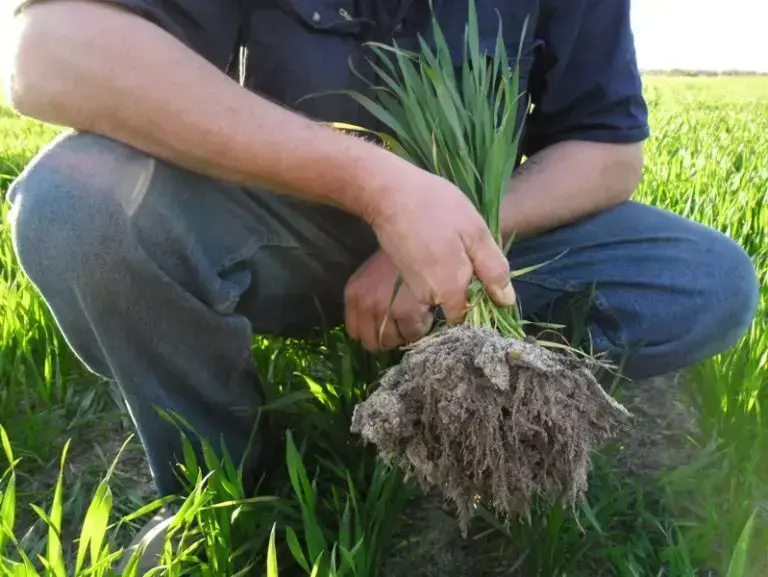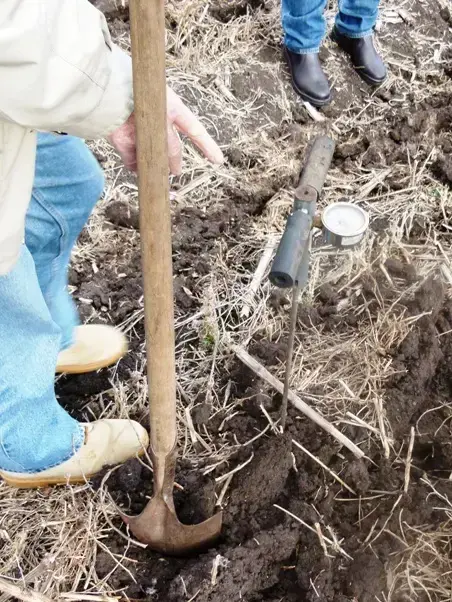How to build soil organic matter: Lessons from three different Australian landscapes
Mark Parsons
Most of the soils across Australia contain only a small proportion of organic matter. So it’s not surprising that many farmers think about building up the organic matter in their soil as a cost-effective way to boost productivity as well as reduce input costs. But there isn’t simply a one-size-fits-all way to do it. As these three examples from our case study properties show, methods for building soil organic carbon are as diverse as the landscapes these properties inhabit.
At Clover Estate on the sandy soils of south-east South Australia, the strategy was to inoculate the soil with fungi, bacteria and biologically-derived fertilisers to provide a substrate for microorganisms. Dealing with low and variable rainfall in the wheat belt of Western Australia, the Prospect Pastoral Company used direct sowing of compost-coated grain seed to encourage root growth to contribute to organic matter in the soil. On the Liverpool plains of NSW, Inveraray Downs took an integrated approach using livestock, compost-based fertiliser and crop rotation to achieve their goals. In all cases, as we outline below, the results speak for themselves.
What is soil organic matter?
We frequently hear about ‘building soil carbon content’. That phrase a bit misleading (unless we are actually talking about burying coal or charcoal!) What most people mean when they say this is ‘building soil organic matter’. This used to be commonly referred to as humus – but humus is only one of four components comprising soil organic matter. Carbon is merely one of the many constituents of soil organic matter, where it is inextricably bound up in all sorts of complicated organic molecules.

Organic matter is practically always present in soil. Proportions range from very little (for example, less than 0.5% in a bleached sand soil) to nearly 100% in the peatiest of peats. Peat is decayed plant material that accumulates in bogs where decomposition of the organic matter is inhibited by wet and cold conditions. Australia has plenty of sandy soils, most notably in southern South Australia and in south-western Western Australia. However, we also have vast areas of soils in between these extremes (1% to 4% organic matter is common) that could benefit from higher proportion.
Organic matter contains essential plant nutrients that become available to plants through the action of biochemical processes. These nutrients become available to plants as the organic matter decomposes. Organic matter also holds moisture, which therefore increases soil moisture holding capacity, especially on sandy soils.
What builds soil organic matter?
Wherever plants grow, roots die and decompose in the soil. Plant leaves and stems also die and fall to the ground, where they may be incorporated into the soil by the combined action of fungi, bacteria, insects, other invertebrates (such as worms), and by vertebrate animals that burrow or dig into the soil.
Native marsupials (like potaroos, bettongs and bandicoots) that dig for fungi, roots, tubers and invertebrates both cultivate the soil and help incorporate organic matter. However, most of these marsupials need dense ground cover vegetation as habitat. The lack of that on some farms, as well as predation by cats and foxes, means these marsupials may no longer occur on most farmland.
Manure can be another source of soil organic matter. In the absence of marsupials, dung beetles that help manure infiltrate the soil by burying it provide an important service to agriculture.
Lessons from Clover Estate, South Australia
The Clover Estate farm in south-east South Australia is located on a land system comprising low, wide sand ridges that developed along the coast as sea levels rose and fell over the past several million years. The deep sandy soil has low natural fertility and organic matter. Water supply is good because there is an aquifer not far below that carries ground water from the east. They found they could add enough fertiliser, irrigate, and pasture productivity was good. But such a solution wasn’t cost-effective in the long-run. Building up soil organic matter was seen as the way to reduce dependence on chemical inputs and to improve animal health at the same time.
They inoculated the soil with plant residue-digesting fungi and bacteria together with biologically derived high-carbon fertilisers to provide a substrate for the microorganisms. Over a period of about 10 years these stimulants increased the measured soil organic carbon content from around 2% to 3%. That might not sound like much, but the combined effects were dramatic: pasture vigour and production improved to the extent that stock output increased by 33%. At the same time, chemical weed control was eliminated and irrigation requirement was reduced from 7–8 Ml/hectare/year to 5–6 Ml/hectare/year, so that input costs were significantly lower.

Building organic matter in poor, sandy soil
Similar methods have been applied in the wheat belt of Western Australia by the Prospect Pastoral Company farm at Wyalkatchem, 160 km north east of Perth. Producing wheat here, on the poor, sandy soils that are prevalent, depends entirely on low and highly variable rainfall. Critical to crop production, soil moisture holding capacity is even more important here than in southern South Australia where irrigation is available. Soil organic matter can play an important role in this.
This case study practices direct sowing of grain seed to minimise soil disturbance, which helps maintain ground cover, helps with weed control and avoids loss of soil organic matter. The grain seed is coated with a compost extract that is found to encourage root growth and leads to a healthier and more productive plant. Soil organic matter is also increased by the vigorous root growth. Once grain is harvested, crop stubble is grazed by sheep bred on the property and adapted to maximise nutrient extraction from roughage. Dung and stubble trampled into the ground also leads to increased soil organic matter.

Integrated approaches on Inveraray Downs
Building soil organic matter has also proved valuable in the quite different landscape on the deep clay soils of the Liverpool plains, north-eastern New South Wales. Soils For Life case study property Inveraray Downs is a grain production property, growing crops such as wheat, sorghum, corn, sunflower and barley. Since the ‘green revolution’ of the mid 20th century, the introduction of higher-yielding varieties of these sorts of grains was associated with considerably increased use of chemical fertilisers and pesticides. By the later years of the 20th century, productivity was declining and the cost of those inputs was becoming prohibitive on Inverary Downs.
Maintaining productivity while breaking the dependence on those inputs required an integrated approach to building soil organic matter comprising:
- changing crop rotation practices to include cattle, green manure crops and longer fallow periods that gave time for soil micro-organisms to break down the green manure crops and crop residues
- using compost-based fertilisers produced on the property from organic wastes obtained from places such as feedlots, chicken farms and stables
- using cattle to break down stubble, which was previously burned, so that the organic matter is incorporated into the soil.

For further reading, we suggest the Soil organic matter- what does it mean for you? article published by the Grains Research & Development Corporation
How do you build soil organic matter on your property? We’d love to hear what you are doing to improve the soil organic matter in your part of Australia. You can let us know here or continue reading more inspiring stories from our other case studies in regenerative agriculture.




